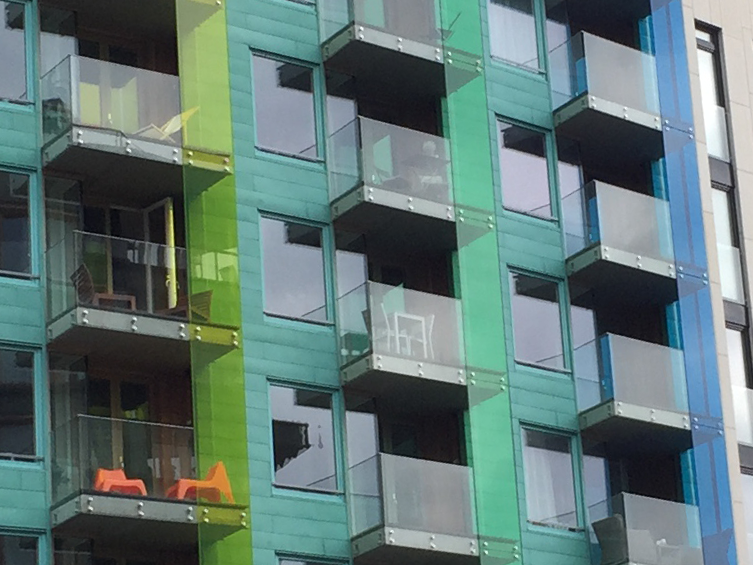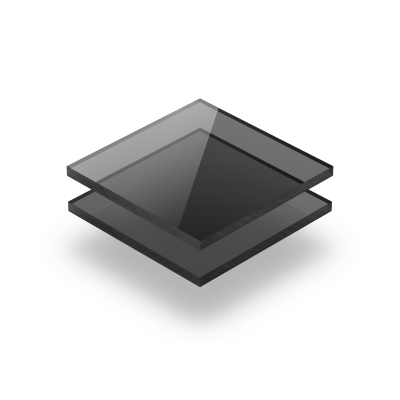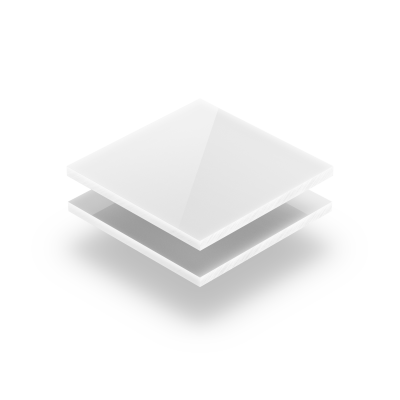A balcony is an attractive feature to have in your home, but its usability is determined by the location and the weather conditions. Balcony glazing can, however, significantly increase the usability of your balcony as well as the levels of comfort. It doesn’t matter whether your balcony is too cold, too wet, too hot or too light, with acrylic balcony glazing it will become a pleasant place to relax. In this article, we provide tips for choosing the right glazing and advice for installing balcony glazing.
Create a pleasant climate for your balcony with the right type of acrylic
As mentioned, the usability of a balcony can be limited by the weather conditions: a lack of shelter can cause a balcony to be too cold in the spring, too warm in the summer and too windy in the autumn. Installing acrylic balcony glazing makes a balcony much more pleasant, and you can easily achieve the desired effect by choosing various options available in acrylic sheet. We are happy to give you an overview of the types of acrylic and the various finishes. One thing is crucial when you opt for acrylic balcony glazing: always opt for cast acrylic sheet as this is considerably stronger and easier to process than extruded acrylic.
Transparent acrylic
The best choice if you want to enjoy your view and stop the wind. Transparent acrylic is also available with a UV-resistant coating that retains heat. This material is – just like all other types of acrylic sheet – easy to maintain just with mild household cleaners. For a long service life and less maintenance, we recommend Burnus antistatic cleaner.
Matt acrylic sheet
One hundred per cent transparent and one hundred per cent privacy. You can combine transparent acrylic with matt finish acrylic, this way you keep the view without being seen by your neighbours. Matt acrylic is an elegant solution for balconies with bars; light still floods into the house while you can sit comfortably sheltered without bystanders at street level seeing you.
Tinted acrylic sheet
Acrylic is available in different shades and different colours. We sell grey and brown tinted acrylic sheet. Tinted acrylic is highly sun-resistant, ideal for balconies where the full sun is too strong in the summer months. In addition, tinted acrylic is ideal for privacy: it stops people from looking in, but you still have a clear view from inside to outside.
Coloured acrylic
Do you want to complement the exterior colours of your home or apartment? Then you can (partly) carry out your balcony glazing in coloured acrylic sheets. We supply acrylic in three transparent colours: green, blue and red. These colours are also available in opal effect. These are less translucent but have the same shade as the other coloured acrylic sheets. This allows you to combine transparent and opal finish sheets, and decide for yourself where you want to see out.
Installing acrylic balcony glazing: Choose the right glass profile
In our webshop, you can order the customised acrylic sheets; if you want to saw the sheets yourself, first read the article “Sawing acrylic“. The most attractive mounting method is with glass profiles. A large variety of U- and H-shaped profiles are available at the hardware store. When choosing, you must take into account where you want to place the glazing: on the edge of a balcony (if you want to create balcony windows), or against the balcony fence (if you want to create wind protection). If you place the glazing on a flat (horizontal) edge, then a U-shaped profile that will lie flat on the balcony edge will suffice. You can attach these profiles in different ways: adhesives, sealants or screws. When screwing in the profile, ensure that the screw heads are countersunk. Protruding screw heads can cause cracks and breaks at the edge of the acrylic sheet. The most important advice here is to choose a profile with a thick bottom edge.
If you want to mount the profile against a vertical surface (against a fence bar), the profile must be provided with a frame. In this frame, drill holes for the fixing screws. It is important that the profiles are provided with a cushioning material, such as felt or foam tape. This prevents the acrylic sheet from vibrating audibly when the wind catches the panel.
A vertical profile is better than a sealant seam
Use an H-shaped profile as a vertical connecting piece between acrylic sheets that are more than 80 centimetres high. These profiles are preferable to a sealant seam because they offer resistance to movement instead of flexing with it.
Mounting on the edge of the balcony
When mounting on the balcony edge, it is important that the acrylic sheet is optimally supported. In this case, at least three profiles must be applied to the side walls of the balcony: below, above and against the facade. First, mount the profiles and then slide the acrylic panel between the profiles. A suction cup for glaziers is a handy tool for this job. After this, mount the next panel, always use an intermediate profile to limit the movement between the two sheets.
Mount against a balcony fence
When mounting against a balcony fence, first place the lower, bearing, profile. Make sure that the profile is level and square. If the profile is slightly tilted forwards or backwards, there may be tension on the acrylic, which can eventually cause hairline cracks in it. The panel must, therefore, be perpendicular. After this, place the acrylic sheet with the top profile on top. Next, mark the positions of the holes and drill them. The most secure method of mounting can be achieved by mounting the profiles against the fence with bolts: to do this, you first have to screw the gate. With light-alloy (aluminium) balcony gates, you can possibly use self-tapping screws.






